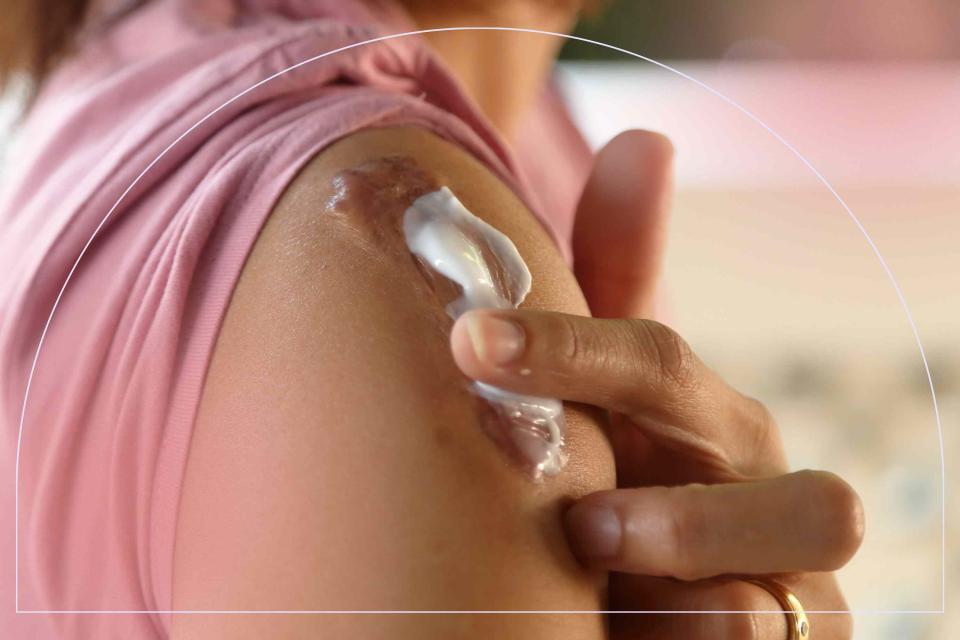How to Get Rid of Keloid Scars, According to Experts
There is hope!

Getty Images/ InStyle
Scars aren't the end of the world, but more often than not they are a bit of a bother. And unless you're a superhero, getting scars throughout your life is mainly unavoidable. There are too many chances of accidental injuries — from cooking to extreme sports — to go through life completely unscratched.
That doesn't mean you can't do anything about them after the matter, though. Depending on what type of scar you have and how long you've had it for, there are a number of treatments that can either reduce or completely eliminate their appearance. The first step is identifying what it is you're working with.
There are scars that sink into your skin, scars that raise above it, scars that look smooth on the skin, and scars that are really thick. Keloid scars are among that group.
:
What is a keloid scar?
Board-certified oculoplastic surgeon, Dr. Christopher Zoumalan, explains that keloid scars are ones that are often thick, raised, and ridged. "Unlike hypertrophic scars — which stay within the area of the original wound and may fade without treatment — they are often larger in size than the original wound or incision and can be very difficult to improve without proper treatment," he continues.
Apart from the initial characteristics, Dr. Zoumalan says that the color of keloids may differ depending on your skin tone. They may appear reddish, purplish, or brown.
People generally develop keloid scars as a result of a wound healing improperly after an injury or surgical incision, but Dr. Zoumalan says they can also result from acne.
"Over 200,000 new Keloid cases are diagnosed yearly in the USA, affecting a large portion of the population and generally, they go unnoticed and misunderstood by many," adds Dr. Michael E. Jones, a board-certified cosmetic and reconstructive surgeon at Lexington Plastic Surgeons. And, while everyone can develop a keloid scar, he says that those of African, Asian and Latin descent are more likely to have keloids in their genes.
What's the best way to get rid of keloid scars?
As with most corrective treatments, the sooner the better. The longer you wait to treat a scar, the more difficult it becomes to reduce its appearance and texture as your body will have had time to form strong tissue and oxidize pigment.
For milk keloids, Dr. Zoumalan says to look for a topical scar cream to flatten it and improve its pigmentation. He particularly suggests Skinuva Scar as it includes selective synthetic growth factors and other skincare ingredients that are clinically proven to improve the appearance of scars two times better than regular silicone scar creams.
For older and/or more sever keloids, he says in-office treatments may be needed. Options include steroid injections, laser treatments, Botox, or, in the most severe cases, surgical removal.

 Yahoo Movies
Yahoo Movies 
